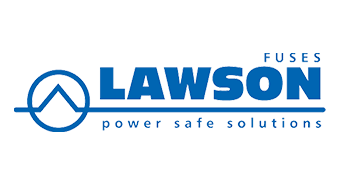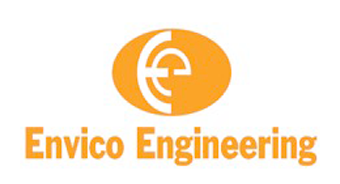Cable Services Stock and Supply
We stock and supply an extensive range of cables to support the market sectors we serve, specializing in Low Voltage solutions up to 1kV.
Ranging from low voltage single or multicore to medium and high voltage cables, we are able to provide your cable requirements to meet with your project needs. Please contact your nearest branch so we can discuss your specific cable requirements in more detail and get you the best trade price.
Low Voltage (LV) – Up to 1kV
View Our Full Range of LV Cable Stock
- Aluminium and Copper Service Cables: Single Core and Three Core, Straight and Split Concentric, PVC and LSOH Low Voltage Service Cables
- Waveform Cables: Three and Four Core, PVC and LSOH, Low Voltage Waveform Cables
- 6491X H07V-R Cable 450/750V (Fixed Wiring)
- 6491B H07Z-R Low Smoke Cable 450/750V BS7211 (LSZH Safety)
- 6181XY Double Insulated Cable 600/1000V BS7889 (Industrial Fixed Wiring)
- SWA/LSZH: BS6724 SWA/LSZH Cable IEC60502 600/1000V
- SWA/PVC: BS5467 SWA/PVC Cable IEC 60502 600/1000V
- H07RN-F harmonised flexible rubber heavy duty trailing cable
- Control Cables: CY screened & bedded flexible control cable, YY PVC Control Cable, and SY Braided Cable
- Panel Wiring: Tri-rated Cable Panel Wiring 105°C 600/1000V
A Comprehensive Guide to Low Voltage Cable Types in the UK
Low voltage cables are a broad category of electrical cables designed to operate at voltages not exceeding 1000V AC or 1500V DC, as defined by British Standard BS 7671. The main types are categorised by their application and include general purpose power cables for energy distribution; armoured cables for mechanical protection; specific building wires like Twin and Earth for domestic circuits; specialised industrial control and instrumentation cables for automation; fire performance cables for life safety systems; and data communication cables for networking and media. As leading UK suppliers of electrical cables and accessories, we understand that selecting the correct type is critical for the safety, performance, and compliance of any electrical installation. This guide provides a definitive overview of the key low voltage cable types available.
The world of electrical wiring is governed by precise standards and application-specific requirements. While the term "low voltage cable" provides a broad regulatory classification based on voltage, the true identity and purpose of a cable are defined by its intended use. This dictates its construction, from the conductor and insulation materials to the inclusion of protective armouring or electromagnetic screening. Understanding these distinctions is essential for any professional, as the choice of cable directly impacts everything from the operational efficiency of an industrial process to the safety of a domestic home. In the following sections, we will explore the primary categories of low voltage cables, clarifying their characteristics and the specific environments for which they are designed.
What Exactly Is A Low Voltage Cable?
A low voltage cable is any electrical cable intended for use within a specific voltage range that encompasses the vast majority of domestic, commercial, and industrial power applications. This classification is not about a single product but a wide family of cables governed by a common set of safety and performance standards.
How Is Low Voltage Defined In The UK?
In the UK, British Standard BS 7671 defines low voltage as a voltage exceeding 50V AC or 120V ripple-free DC, but not exceeding 1000V AC or 1500V DC between conductors.
This definition is crucial as it covers standard UK mains voltages, including 230V single-phase and 400V three-phase systems. It is important to distinguish this from "extra-low voltage," which applies to circuits not exceeding 50V AC, such as telecommunications, alarm systems, and data cabling.
While BS 7671 (the IET Wiring Regulations) is a non-statutory document, its role in UK law is fundamental. The Electricity at Work Regulations 1989 is a legal requirement under the Health and Safety at Work etc. Act 1974, mandating that all electrical systems are constructed to prevent danger. Authoritative sources like the Health and Safety Executive (HSE) regard installations that conform to the standards in BS 7671 as the most likely way to achieve conformity with these legal obligations. Therefore, selecting and installing the correct low voltage cables in accordance with BS 7671 is the accepted professional method for demonstrating legal compliance and fulfilling a duty of care, making it a critical aspect of professional liability and risk management.
General Purpose Low Voltage Power Cables
These cables form the backbone of electrical distribution, designed to transmit power efficiently and safely from a source to various loads. Their construction is determined by the balance between electrical performance, environmental resilience, and cost.
What Are The Main Conductor And Insulation Materials?
Conductor and Insulation Materials Explained
The most common materials are highly conductive copper or lightweight aluminium for conductors, and versatile thermoplastic (PVC) or robust thermosetting (XLPE) compounds for insulation and sheathing.
The choice between these materials represents a critical engineering trade-off based on the specific demands of an application.
Conductors:
- Copper (Cu): Industry benchmark for electrical conductivity. Flexibility and high conductivity allow for smaller conductor sizes for a given current rating.
- Aluminium (Al): For larger cables, provides a compelling alternative. While it is less conductive than copper (requiring a cross-sectional area approximately 1.6 times larger for the same current capacity), it is significantly lighter and often more cost-effective.
Insulation and Sheathing:
- PVC (Polyvinyl Chloride): Highly versatile, flexible, and cost-effective thermoplastic. Standard choice for general-purpose internal wiring.
- XLPE (Cross-linked Polyethylene): Thermosetting material with superior thermal stability (up to 90°C). Preferred for more demanding applications and underground cables.
What Are Armoured Cables Used For?
SWA vs AWA Cable: Why the Armour Material Matters
Armoured cables are used in applications requiring enhanced mechanical protection against impact, crushing, or abrasion, making them essential for external, direct burial, and heavy-duty industrial installations.
The distinction between Steel Wire Armour (SWA) and Aluminium Wire Armour (AWA) is a mandatory safety requirement dictated by the principles of electromagnetism:
| Feature | Steel Wire Armoured (SWA) | Aluminium Wire Armoured (AWA) |
|---|---|---|
| Armour Material | Galvanised Steel | Aluminium |
| Magnetic Properties | Magnetic | Non-Magnetic |
| Core Application | Multi-core cables (all types) | Single-core AC power cables |
| Primary Function | High mechanical protection | Mechanical protection without overheating from eddy currents |
| Typical Use Case | Underground power to a factory (3-phase) | High-current single-phase supply to machinery |
Critical Risk: Using the wrong type of armour for the application constitutes a serious design flaw that introduces a significant fire risk.
Common Cables For UK Building and Wiring
What Is Twin and Earth (T&E) Cable?
Twin and Earth (T&E) is the most common type of fixed wiring cable used for domestic and light commercial applications in the UK, such as general lighting and ring final circuits for sockets.
Its construction is simple and effective for its purpose. It consists of two insulated current-carrying conductors (the 'twin')—one live (brown) and one neutral (blue)—and a bare Circuit Protective Conductor (CPC), which is the 'earth'. These three conductors are enclosed within a distinctive flat grey PVC outer sheath.
Common Sizes & Applications:
- 1.0mm² or 1.5mm²: For lighting circuits.
- 2.5mm²: For ring final circuits (sockets).
- 6.0mm² or 10.0mm²: For high-power appliances like electric showers and cookers.
When Is 3 Core and Earth Cable Used?
3 Core and Earth cable is primarily used for installations that require an additional conductor beyond live and neutral, most commonly for two-way or intermediate lighting switches, boiler controls, and extractor fans.
This cable contains three insulated cores (typically brown, black, and grey) plus a bare CPC for earth.
Usage in Two-way Lighting:
In two-way lighting, where a single light is controlled from two separate switch locations (e.g., at the top and bottom of a staircase), the third core is essential. It provides the permanent and switched live connections needed to create the circuit, allowing either switch to control the light independently.
Specialised Low Voltage Cables For Industrial Control
What Are Control Cables (YY, SY, CY)?
Control cables are flexible, multi-core cables designed to transmit power and control signals for measuring, regulating, and automating industrial processes. They are often identified by the common YY, SY, and CY classifications.
YY, SY, and CY Code Breakdown:
- YY Cable: Unscreened, for light mechanical stress.
- SY Cable: Galvanised Steel Wire Braid (GSWB) for medium-to-high mechanical protection.
- CY Cable: Tinned Copper Wire Braid screen for Electromagnetic Compatibility (EMC) and signal protection.
Compliance Gap: IET guidance explicitly discourages the use of YY, SY, and CY cables in fixed installations under BS 7671.
Instrumentation vs. Control Cables
The core difference is Signal vs. Power. Instrumentation cables transmit sensitive, low-energy data signals, whereas control cables carry higher-energy power signals to operate machinery.
- Instrumentation Cables: Priority is signal integrity. Constructed with twisted pairs and extensive shielding (sensors, transmitters).
- Control Cables: Priority is robust power delivery. Construction focuses on current-carrying capacity and mechanical durability (motors, actuators).
Substituting one for the other is a common design error that creates a serious safety or performance hazard.
Essential Cables For Safety and Data
What Are Fire Performance Cables?
Fire performance cables are specially constructed to maintain circuit integrity for a specific period during a fire, ensuring that critical life safety systems remain operational for safe evacuation.
Two Distinct Properties:
- Fire Resistance: Cable's ability to continue functioning (e.g., PH30 or PH120 rated survival time).
- Reaction to Fire (LSZH): Cable's own behaviour when burning. LSZH cables dramatically improve visibility and reduce corrosive acid gases, reducing risk to human life and sensitive equipment.
What Low Voltage Cables Are Used For Data and Communications?
The two primary categories are Coaxial cables (high-frequency analogue and digital signals) and Ethernet cables (twisted-pair for computer networking).
Ethernet Cable Categories (Future-Proofing):
| Category | Max Speed (at 100m) | Max Bandwidth | Common Use Case |
|---|---|---|---|
| Cat5e | 1 Gbps | 100 MHz | Home networks, small offices, voice traffic |
| Cat6 | 1 Gbps (10 Gbps up to 55m) | 250 MHz | Modern office networks, video streaming |
| Cat7 | 10 Gbps | 600 MHz | Data centres, high-performance applications, smart homes |
Your Partner For All Low Voltage Cabling Needs
As this guide demonstrates, the world of low voltage cabling is diverse and technically complex. The selection of the "correct" cable is rarely a simple choice and depends entirely on the context of the application—be it legal, physical, functional, or technological. Making the wrong decision can have significant consequences for performance, safety, and regulatory compliance.
At Cable Services, we pride ourselves on being more than just a supplier. We are an expert partner dedicated to helping you navigate this complexity. Our extensive stock covers every category of low voltage cable, from general building wires and armoured cables to highly specialised control, instrumentation, and fire performance solutions. We provide not just the products, but the deep technical knowledge required to ensure you select the most effective, compliant, and cost-efficient cable for your specific project.
Whether you are undertaking a domestic rewire, a commercial fit-out, or a complex industrial automation project, explore our comprehensive range of electrical cables or contact our team today to ensure your installation is built on a foundation of quality and expertise.
Need Low Voltage Cable Stock Now?
For the best trade prices, immediate stock checks, and rapid delivery quotes on any LV cable in this list, speak directly to our experts.
Cable Services supply a wide range of products from leading brands, click here to see a sample range of cables that can offer:
Contact Us
For further details on our products and services please get in touch.
Tel: + 44 (0) 1978 340 450
Email: sales@cableservices.co.uk
Cable Cutting Service
We have invested in an automatic winding and measuring cable cutting machine at our Wrexham facility. This £90,000 investment reflects our commitment to offering an economically valuable and highly efficient service for our valued customers.
We are known for providing tailored solutions that meet the exact needs of our customers. We recognise the growing demand for a flexible service that eradicates waste and delivers cost efficiencies. The efficiency and precision of this new machine support the industry’s commitment to operational sustainability and allow us to pass on cost savings to our customers.
Free Cable Size Calculator
You determine correct cable sizes. You input voltage parameters. You input load requirements. Our tool ensures BS 7671 compliance. You avoid costly specification errors.







